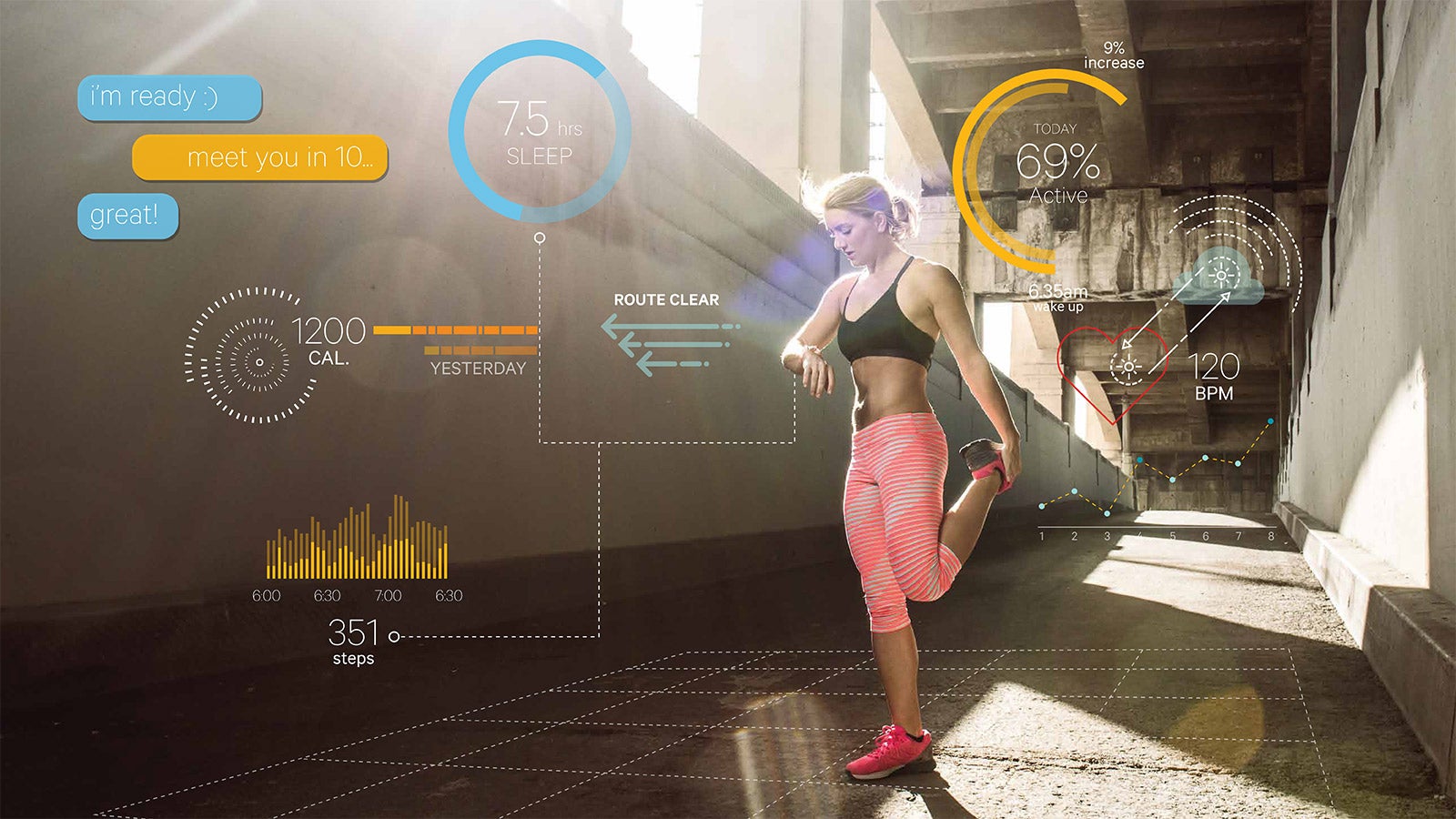The next wave of fitness wearables will send data directly to doctors
You’re committed to becoming more active and healthy. So you join a gym, find a workout buddy, or hire a personal trainer. And like more and more of us, you might also buy a fitness tracker—a wearable wireless device with built-in sensors that measure your physical activity. According to a Gartner study, 68.1 million wearable fitness trackers are expected to sell in 2015, and 91.3 million in 2016.


You’re committed to becoming more active and healthy. So you join a gym, find a workout buddy, or hire a personal trainer. And like more and more of us, you might also buy a fitness tracker—a wearable wireless device with built-in sensors that measure your physical activity. According to a Gartner study, 68.1 million wearable fitness trackers are expected to sell in 2015, and 91.3 million in 2016.
These mostly wrist-worn devices can tell you far more about your physical activity than the humble pedometer ever could. Current trackers—both dedicated devices and smartwatches with sensors—can measure your heart rate, distance traveled, speed, altitude, calories consumed, and even your sleep patterns the night before. As they evolve, and new kinds of sensors are built in, they can do what some targeted, wearable medical devices (such as blood glucose meters and cardiac monitors) can already do: Things like checking your breathing rate, stress level, and different types of brain activity.
But does the average user know what to do with—or even want—all this information? Does the average person really want to become the quantified self, continually measuring, examining, and evaluating their own physical data? Perhaps not: A study by tech consultants Endeavour Partners found more than half of US consumers who have owned an activity tracker no longer use it.
Dr. Steven Steinhubl, director of digital medicine and cardiologist at Scripps Translational Science Institute, has an idea of why this might be.
“For all of these devices, there has to be this back-end that gives you the useful kind of information that they want from that device,” he said. “There’s that rare ‘quantified self’ who really wants to look at all of the data in a new way and understand. But there’s going to be a much larger percentage of individuals who, the more their activity tracker bothers them, the less they’re going to want to wear it. We have to be able to provide those people with actionable, useful information, only when they need that information, and not just arbitrarily.”
Therein lies the challenge. Developers are taking it on, working on products that translate physical data into personalized feedback that can help users become more active. In addition to popular existing apps like My Fitness Pal, new kinds of personal analytics apps are cropping up. Lark, for example, tracks workouts via smartphone sensors, acting as a personal coach and cheerleader users can “chat” with. The app analyzes a user’s daily activities, suggests workouts based on those activities, and sends encouraging texts—say, a compliment on your choice of a salad for lunch.
Another web app, Exist, examines data from services a person already uses—Fitbit, iCal, Twitter, and Spotify, for example—and analyzes his or her habits across the different services. The app gets smarter and more personal over time, using data from the last 90 days to suggest new fitness goals.
These technologies that can collect and leverage someone’s physical information could lead to better overall health. Leading the way is Qualcomm Life’s 2net platform, a cloud-based system that captures, transmits, and aggregates biometric data from medical devices and sensors, so health care providers, family caregivers, and patients have access to the data. The 2net hub and 2net mobile products collect biometric data via short-range radios, then encrypt it and send it to the cloud-based 2net platform via cellular technology.
Data sent to the 2net platform can be also synced with Qualcomm Life’s HealthyCircles Care coordination platform, an enterprise software-as-a-service (SaaS) solution that provides a secure communications and record-sharing infrastructure for care-team coordination. Through smart algorithms and exception-based management protocols within the HealthyCircles platform, a heart-failure patient’s blood pressure measurements could trigger an alert for a nurse case manager or doctor to check in on the patient, for example. And patients and family caregivers can monitor and manage the patient’s health status from home.
Developments like 2net and HealthyCircles are only the beginning of the quantified-self movement and health care. Connected health services will evolve with the data-collecting wearables that drive them. In-ear “earables” will measure body temperature and blood pressure very accurately. Wearables may even be invisible one day, replaced by hidden technology such as MC10’s tiny, see-through stickers—equipped with a battery and sensor—that sit on the skin.
As wearables are integrated into these health and fitness channels, health care professionals will look to the data collected on an everyday basis, rather than a yearly physical exam, ultimately shifting from an encounter-based health care to continuous care. Doctors will be more involved in a patient’s recovery and overall well-being. And an individual’s TMI data will become truly useful. It’s a paradigm shift in healthcare that will leave everyone feeling good.
This article was commissioned by and written for Qualcomm Incorporated, and was not written by the Quartz editorial staff.